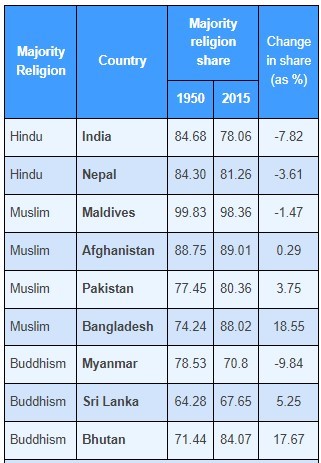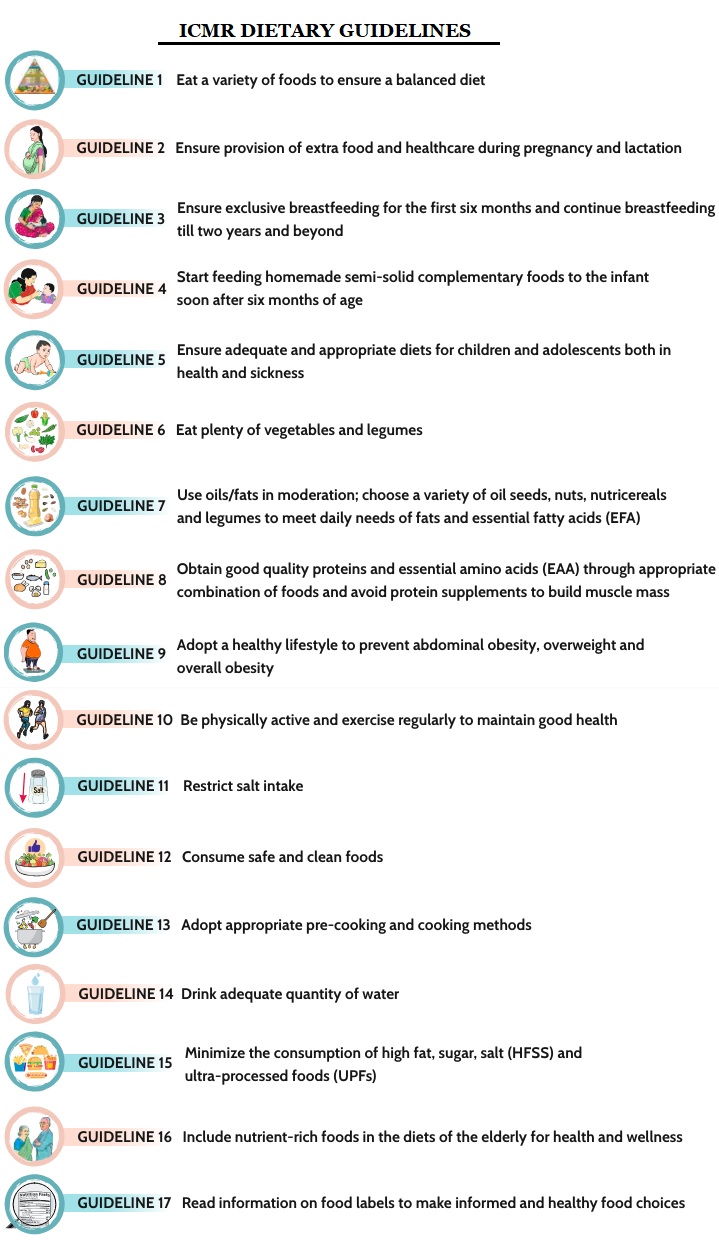A recent working paper by the Economic Advisory Council to the Prime Minister (EAC-PM) pointed out that India witnessed a reduction in the share of the majority religious denomination by 7.82%.
Key findings
|
Religion |
% of population in 1950 |
% of population in 2015 |
Changes |
|
Hindus |
84.68% |
78.06% |
Decrease in population |
|
Jains |
0.45% |
0.36% |
Decrease in population |
|
Parsis |
0.03% |
0.004% |
Decrease in population |
|
Muslims |
9.84% |
14.09% |
Increase in population |
|
Christians |
2.24% |
2.36% |
Increase in population |
|
Sikhs |
1.24% |
1.85% |
Increase in population |

Reference
The Hindu | Share of Religious Minorities: A Cross-Country Analysis (1950-2015)
The Dietary Guidelines for Indians
Indian Council of Medical Research (ICMR) released 17 dietary guidelines to meet the requirements of essential nutrients and prevent non-communicable diseases (NCDs) such as obesity and diabetes.

|
Disease burden in India |
|
References
Punjab Agricultural University has developed a biocontrol agent Trichoderma asperellum to manage ‘foot rot’ disease, in Basmati rice crops.
|
Central Insecticides Board and Registration Committee |
|
Reference
New COVD-19 strains KP.2 and KP1.1 known as FLiRT variants causing a surge in cases in the U.S., U.K., South Korea and New Zealand.
INSACOG is an Indian SARS-CoV-2 Genomics Consortium, a network of genomic laboratories.
Reference